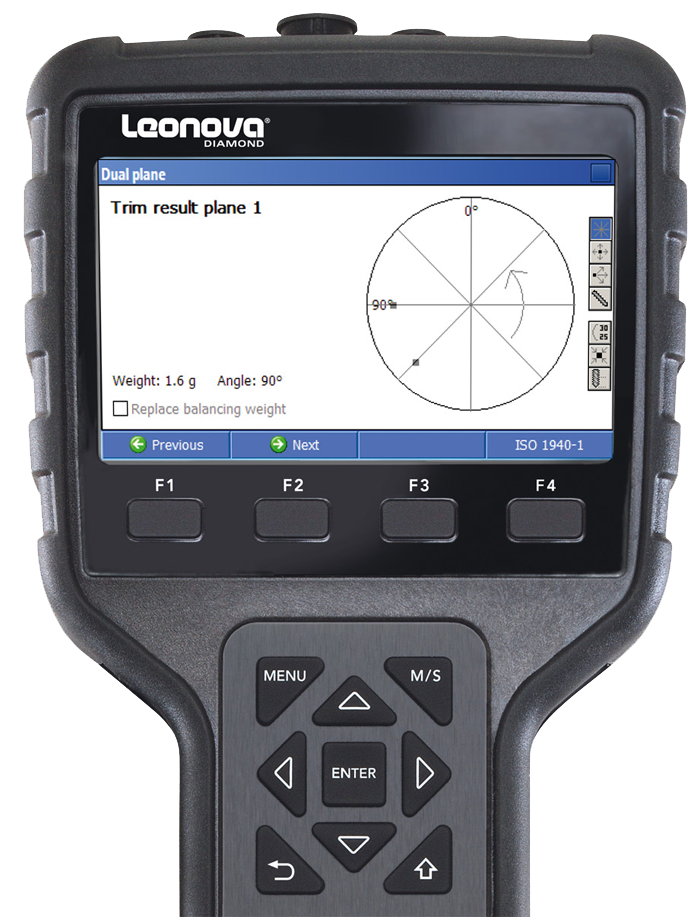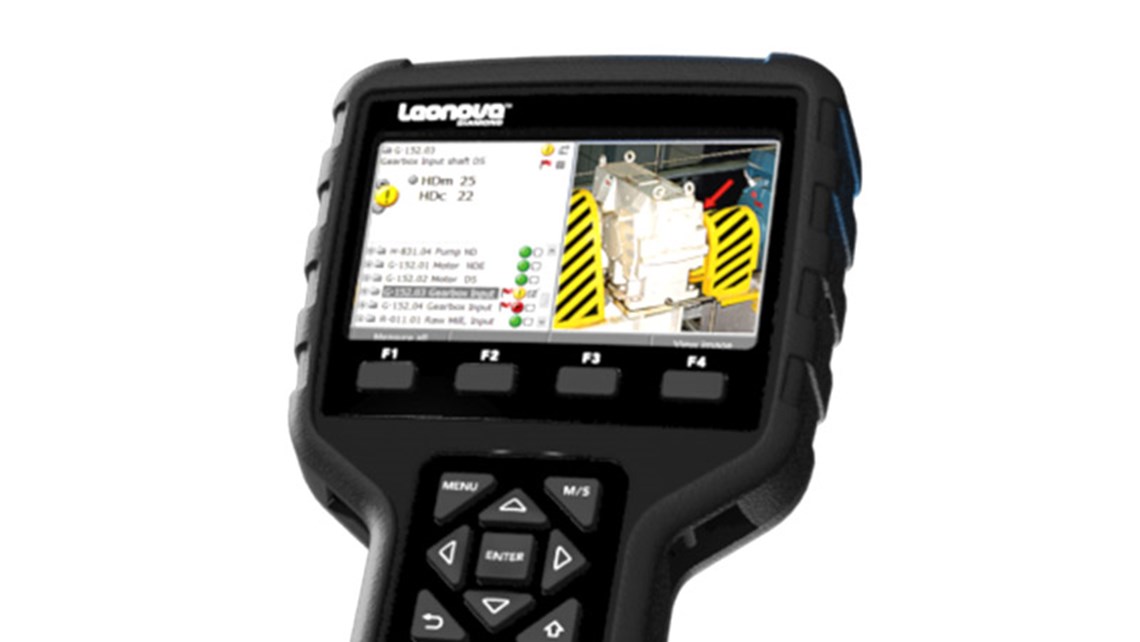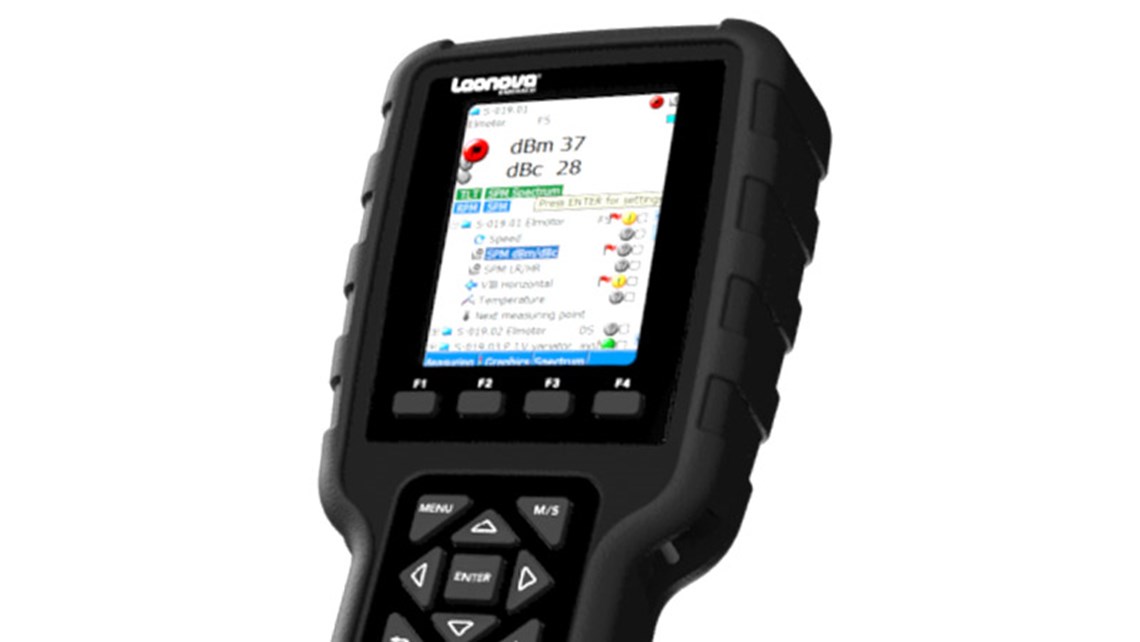Balancing
An imbalance is a condition where a shaft's geometric centerline and mass centerline do not coincide. Correct balancing helps reduce stress on bearings and seals, problems with looseness, and resonances. Balancing can be performed with our handheld instruments Leonova Diamond and Leonova Emerald.
Single plane balancing
Single plane balancing, 4 runs
This method uses one measurement without trial weight to determine the vibration severity (mm/s RMS) of the rotor, followed by three measurements with trial weights at 0°, 120°, and 240° to calculate the weight and position of the correction mass.
Single plane balancing, 2 runs
This method uses one measurement without trial weight to determine the vibration severity (mm/s RMS) of the rotor, followed by one measurement with a trial weight to calculate the weight and position of the correction mass. It requires time-synchronized vibration measurement (trigger pulse supplied by a pulse from the SPM tachometer probe or a proximity switch) to find the relative phase angle between the two vibration measurements.
Dual plane balancing
The same two-run method as used for single-plane balancing, but with vibration measurement and weight correction in two planes. These measurements can be made by shifting the vibration transducer or by connecting two transducers. Note that dual-plane balancing can be performed by Leonova Diamond®.
For all methods, a final run can be made to check the balancing results and, if needed, get the data for further adjustments. Leonova then saves a balancing log file.
Leonova guides step-by-step through the balancing procedure. One can shift the rotation direction and change the measured parameter from velocity to acceleration or displacement.
In addition to the RMS value, a spectrum is shown to help find the part of vibration that is due to unbalance. For the two-run methods, the number of samples for obtaining a time-synchronous average is set to min. 4.
Correcting imbalance
Leonova calculates a number of alternatives for correcting the imbalance:
- Trial weight: Input rotor diameter, weight, and rpm to obtain a suitable trial weight in grams.
- Split the correction mass: Input the number of rotor partitions to distribute the correction mass between two of them.
- Weight removal: Drill hole diameter and depth calculated for various materials.
- Radial displacement: Input the change in radial distance to recalculate the weight.
- Degrees to length: change from angle to length measured along the rotor circumference.
- Keep trial weight: Calculate the correction mass with the trial weight remaining in place.
- Sum up weights: Replace all correction masses on the rotor by one.



